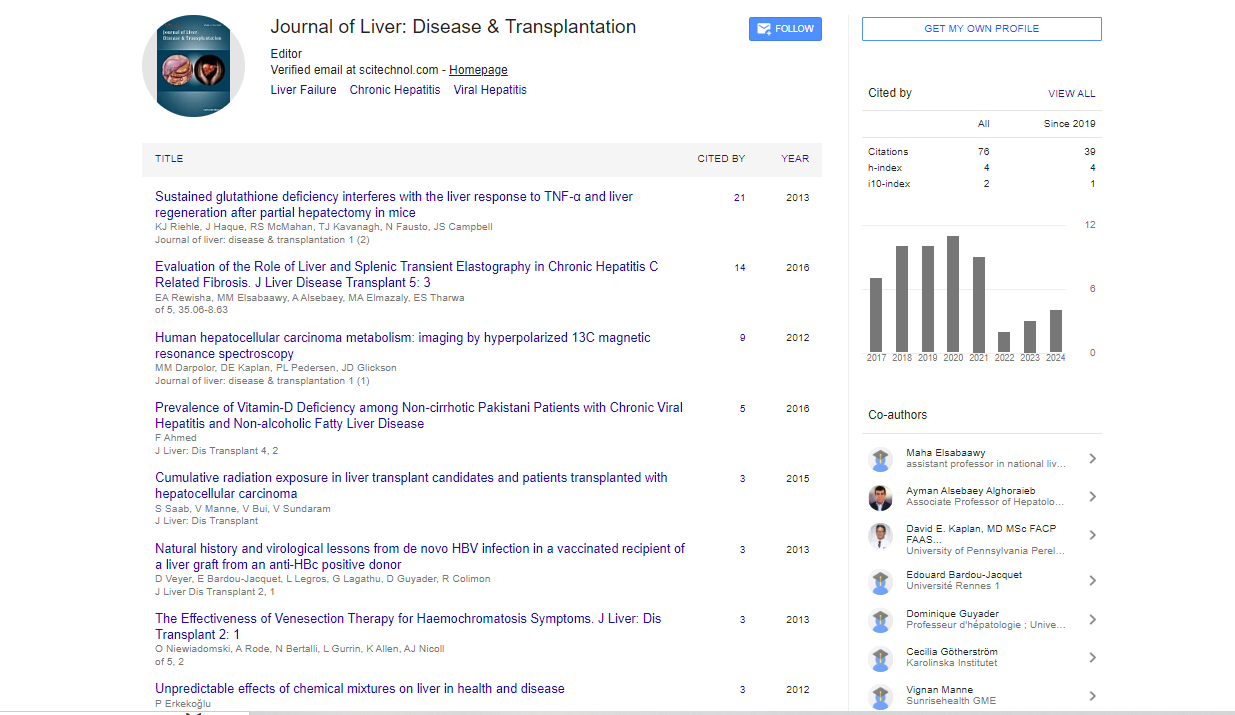Update of stapled anorectal surgery
Chung-Hung Yeh
St. Martin De Porres Hospital, Taiwan
: J Liver Disease Transplant
Abstract
Surgical stapling technique was pioneered by a Hungarian surgeon, Dr. Humer Hultl, known as the “father of surgical stapling”. In the early 1900s, many of the basic principles of mechanical stapling began to emerge. After one-century’s development, all kinds of devices were invented, including linear staplers, linear cutters, and circular staplers. The staplers also make minimally invasive surgery possible. There are plenty of endoscopic staplers were designed, and these were utilized in chest surgery, gastric surgery, bowel surgery, and many other surgical procedure. The surgical staplers were also used in anorectal surgery. The circular staplers have been used for low and very low bowel anastomosis to avoid permanent colostomy for decades. Stapled transanal mucosectomy, firstly aims to treat rectal internal mucosal prolapse and obstructed defecation, and was later proposed by Dr. Antonio Longo for the treatment of hemorrhoids in 1993. Subsequently called stapled hemorrhoidopexy or procedure for prolapsed hemorrhoids (PPH), the technique gained a wide popularity due to the low postoperative pain. In 2005, the practice parameters of the American Society of Colon and Rectal commended: Stapled hemorrhoidopexy is a new alternative available for individuals with significant hemorrhoidal prolapse. Then, also proposed by Dr. Longo, a rectal wall resection with a circular stapler was the basis for the development of the stapled transanal rectal resection (STARR) procedure. This procedure consists of a double transanal rectal resection and is aimed at correcting the anatomical anomaly of the rectum in patients with rectocele and/or rectal intussusception causing obstructed defecation. Although, some exceptionally rare but potentially devastating complications include anovaginal fistula, substantial hemorrhage, fistula, retroperitoneal sepsis, and rectal perforations have been reported after stapled anorectal surgery, the documented adverse events scattered and presented as case-report. When the procedures of PPH and STARR were accepted, more and more stapled anorectal rectal procedures have been presented, and the efficacy and safety of these new procedures will need further monitoring
Biography
Chung-Hung Yeh has completed his Medical Degree at Taipei Medical University. After, he completed General Surgical training in 1995; he completed his Colorectal Surgical training at Chang-Gang Memorial Hospital (CGMH), and became the Director of Department of Colorectal Surgery at Chai-Yi CGMH from 2001 to 2009. He has published more than 25 papers in reputed journals and was a Senior Lecturer of Chang-Gang Medical School. He serves as Deputy Director of Surgical department at St. Martin De Porres Hospital since 2013
 Spanish
Spanish  Chinese
Chinese  Russian
Russian  German
German  French
French  Japanese
Japanese  Portuguese
Portuguese  Hindi
Hindi 